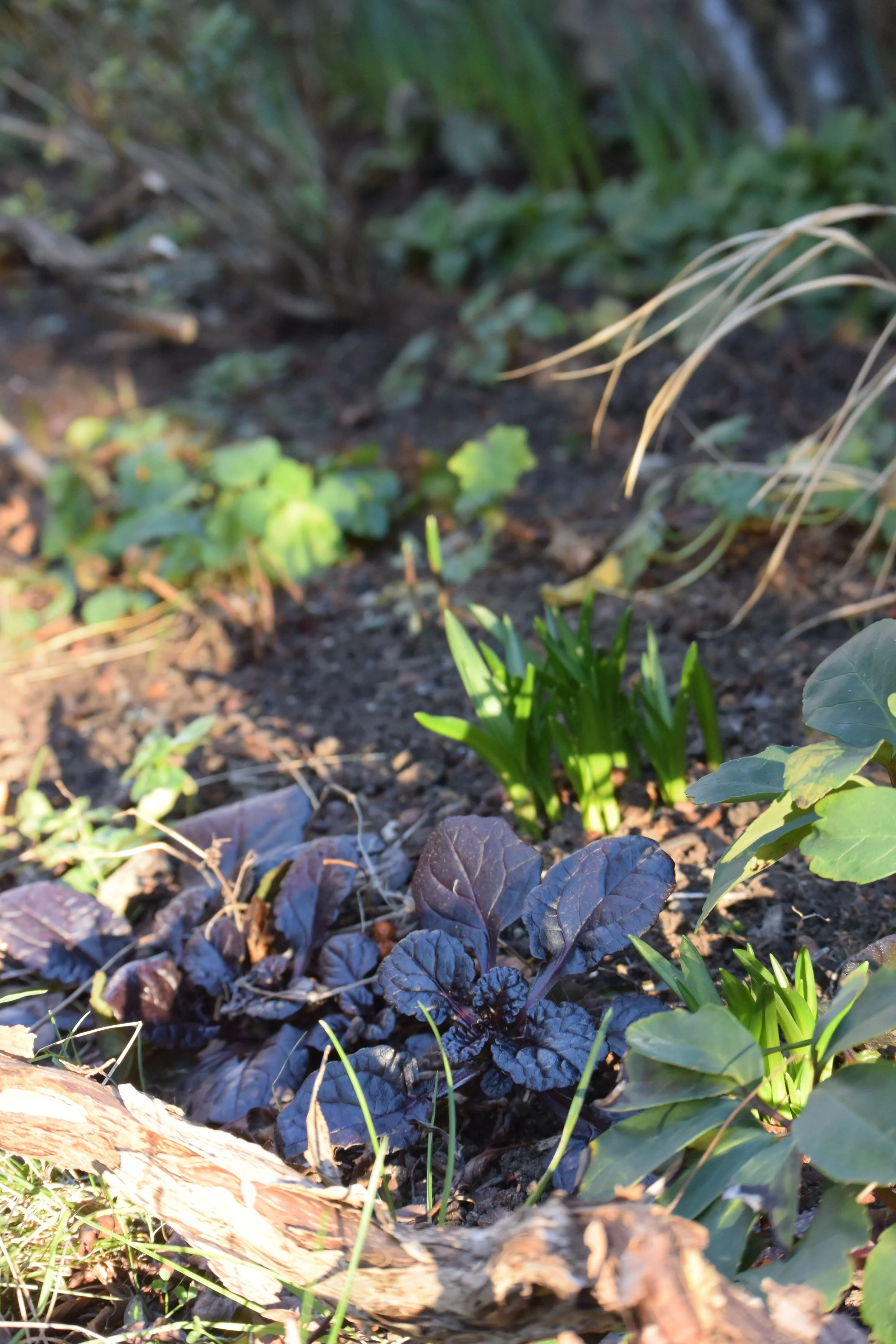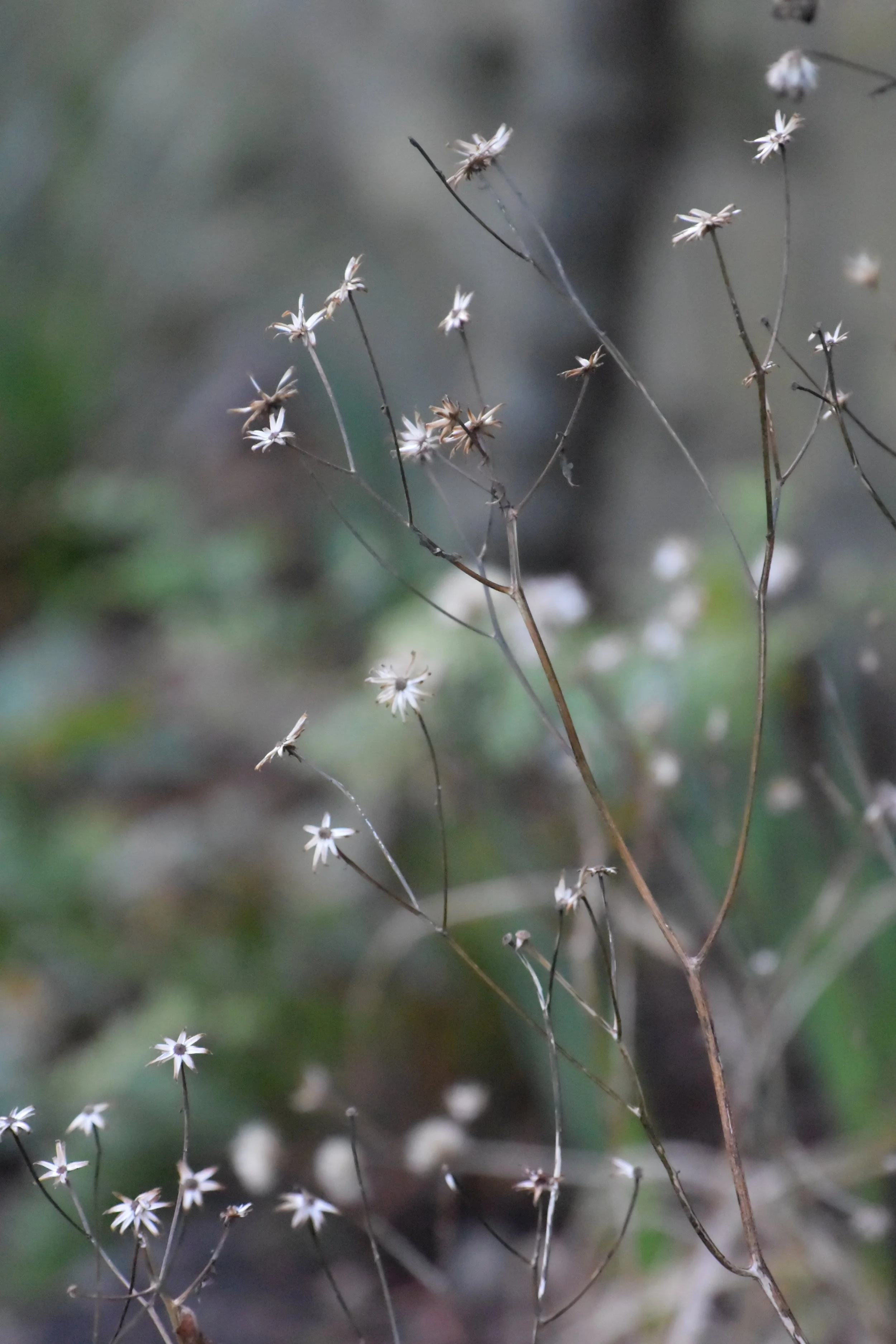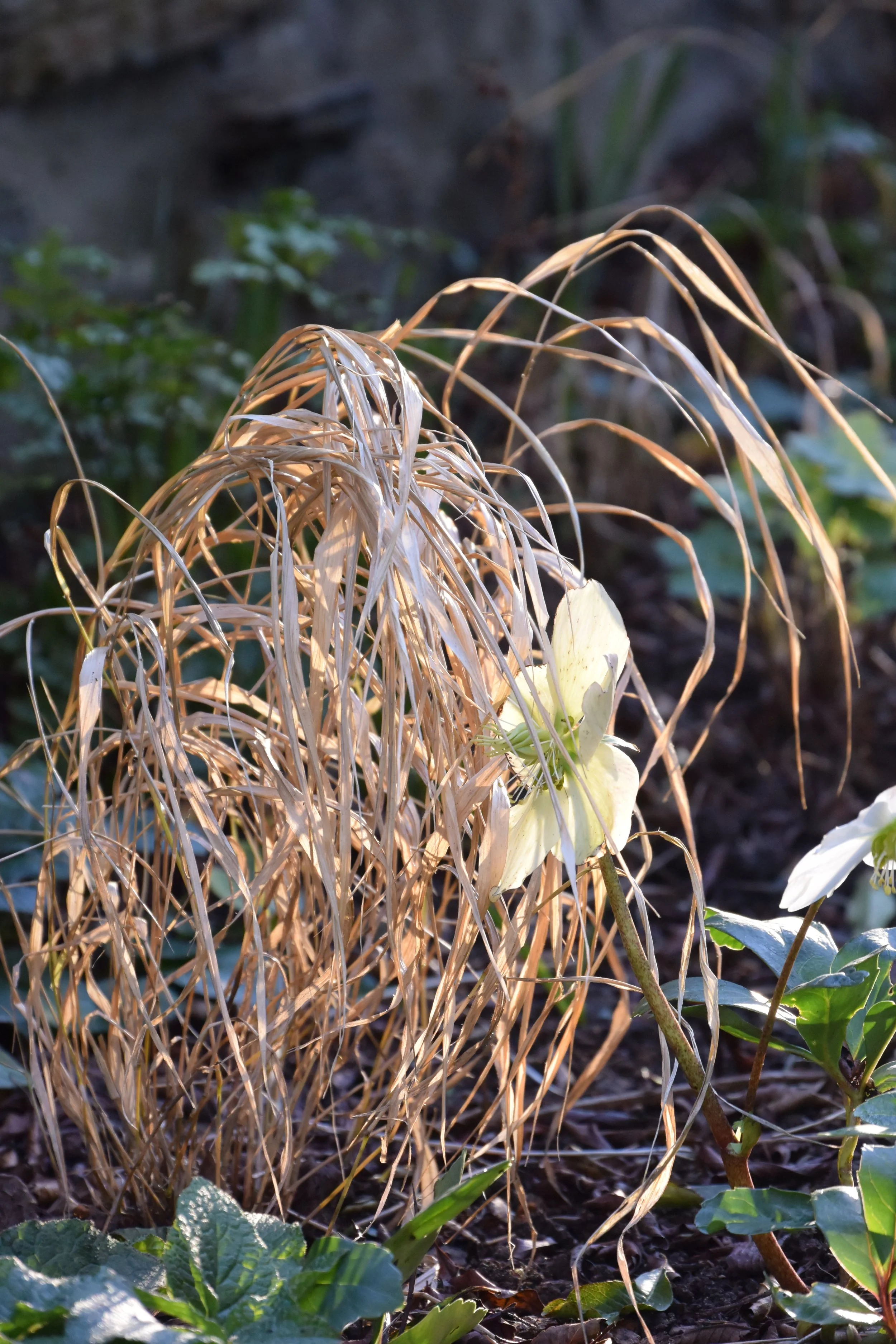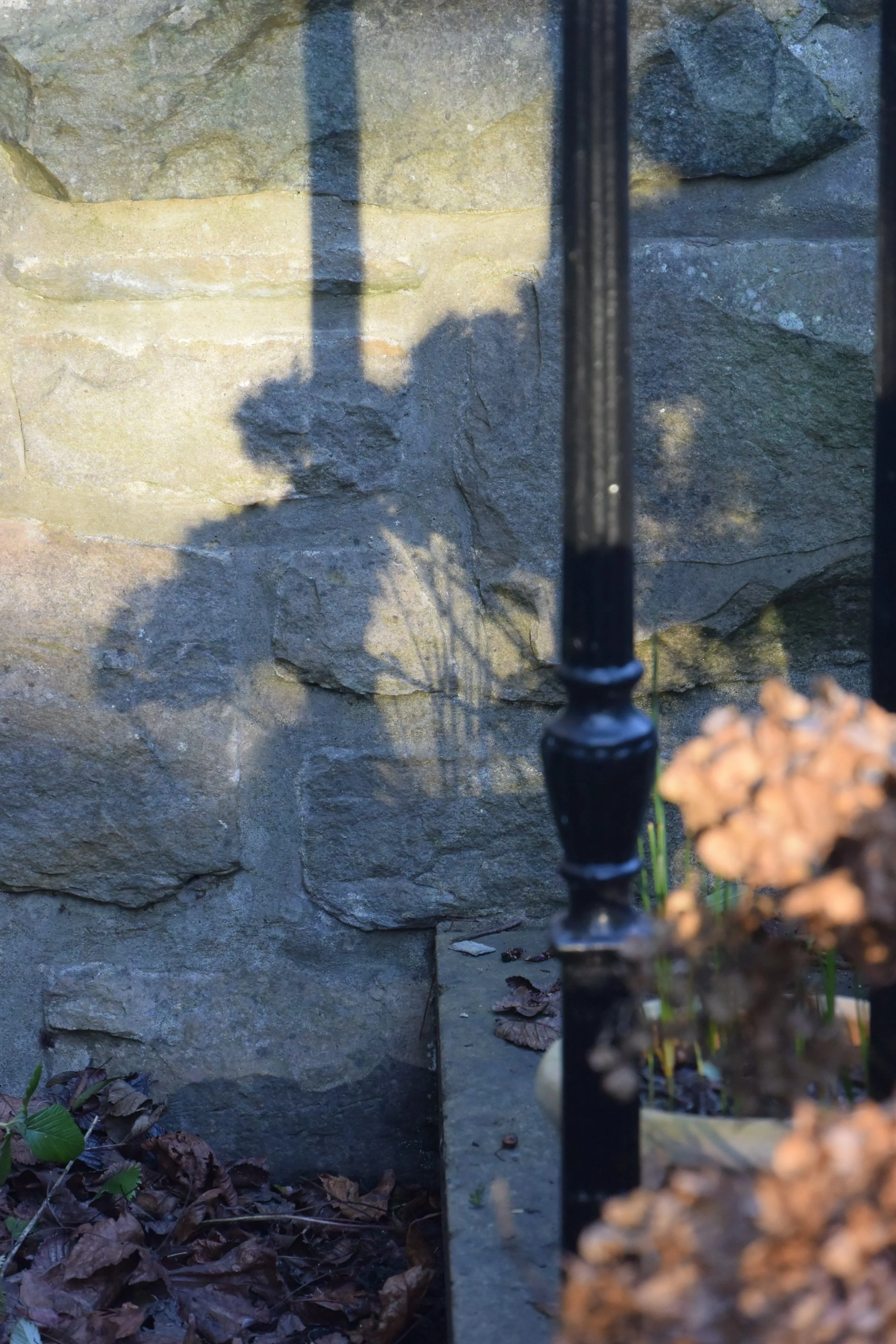my front garden plants and flowers – what I see in February 2024
Garden and its main features
The garden that I am looking after, which is a communal space, is located alongside a very busy street in Edinburgh. It has a very simple layout.
It is a long and narrow space, with a patch of lawn running through the middle.
The lawn divides the garden into two areas. There are two borders: one that runs along an old stone wall, under a Pyracantha hedge, shady and dry, the other one is sunny, bright, open, and runs along an old metal railing. This area has very stony, poor soil.
At the end of the garden there is an area with shrubs and trees that resemble a small woodland. This is quite a dry and shady area.
Each area of this front garden is distinct and creates different conditions for plants to grow.
Over the past few years, when introducing new plants into this garden, the selections I have made have been mainly driven by the conditions, soil and light, of each section of the garden.
Tending for this front garden is still a learning experience for me, as not all the plants I have selected thrive.
Nevertheless, looking after this garden is a fantastic learning experience for me. It allows me to test, observe and learn about plants and how they interact with each other.
This small front garden is more like a small laboratory, an experimental and non-judgemental ground to test and evaluate my ideas.
Visual journey through the front garden - February
Ajuga, fantastic ground covering plant
At this time of the year the most prominent feature in the front garden is the evergreen foliage of its many plants.
How beautiful is the burgundy foliage of Ajuga! It is a great plant that spreads easily by stems that grow horizontally, hence it is a fantastic ground cover plant. I planted it in more shady area of the garden, where the soil is often dry.
Another great ground covering plant that grows in the front garden is Viola riviniana. It self-seeds freely, which is a valued feature, as it allows it to cover the patches of bare soil. Its heart-shaped evergreen foliage beautifully fills the winter border.
Last year I added a few ferns – Dryopteris erythrosora, into the shady part of this front garden. They bring much needed height into the overall look of the flower border, as well as a good evergreen backdrop for dry skeletons of perennials.
White Wood Aster ‘s dried flower stems
Dried Hakonechloa macra ornamental grass
Front garden plants, shady part of the garden
Floral elements that grace the front garden
February is a month where there are just a few but striking floral elements in the front garden.
Hellebores, with their pure white blossoms, capture our attention immediately. They contrast well with dark green foliage of other plants.
I also noticed that a Geranium plant is producing a few, shy, pink flowers, their long stems climbing up the Curry plant (Helichrysum italicum).
I want to mention a Hydrangea shrub, which, at this time of the year, is topped with big, dried rusty flower heads. In winter months they add much needed structure into the flower borders.
Another dry floral skeleton, that it is decorating borders of this front garden at this time of the year is White Wood Aster (Eurybia divaricata). Their long, dry stems, carry a stary-shaped dry remnants of flowers.
February garden - other inspirations
Gardens at this time of the year are lit up by a beautiful low light. In our front garden the light shines across two long borders.
I love how it lights up the dry blades of Hakonechloa grass. It also creates fantastic shadows on the old stone wall.
I have also positioned the pots with bulbs, that I planted in autumn last year, in a more visible spot, so the bulbs can be appreciated by passers-by, bringing the sense of spring anticipation.
In February the front garden flower beds might not be a fusion of colours, they rather bring a sense of a quiet contemplation, encouraging to tune into the details.
Nevertheless, I am looking forward to how the garden slowly starts to unveil the promise of spring.





